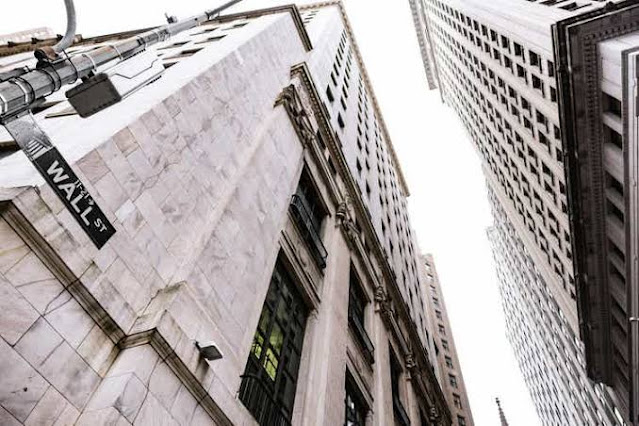Wall Street on Edge: Alarming Market Signals Point to Turbulence Ahead for U.S. Stocks
Wall Street on Edge: Alarming Market Signals Point to Turbulence Ahead for U.S. Stocks
A Market at a Crossroads: Cracks in the Rally
The U.S. stock market is flashing ominous warning signs, with mounting technical breakdowns, economic fragility, and intensifying global competition creating a perfect storm. A once-resilient rally is now faltering, leaving investors to question whether deeper turmoil lies ahead.
Recent trading sessions have seen sharp declines across major indices, shaking confidence among traders and institutions alike. The S&P 500 has plunged 9.3% from its peak, erasing nearly all of its early 2025 gains. Even more troubling, it has breached its 200-day moving average, a level historically seen as a critical floor of support. When this threshold cracks, it often foreshadows extended weakness and bearish momentum.
Tech stocks, which have long driven the market’s gains, are bearing the brunt of the downturn. Nvidia, Tesla, and other high-growth giants have seen their valuations erode rapidly, dragging the Nasdaq into correction territory. The widespread selloff suggests a deeper sentiment shift, with investors retreating from speculative assets and seeking safer havens.
The Economy Under Pressure: Recession Fears Resurface
Beyond technical indicators, the broader economic landscape is growing increasingly fragile. A fresh wave of trade tariffs implemented by the Trump administration has fueled fears of inflationary pressures and slowed global demand.
According to a Reuters poll, 95% of North American economists believe recession risks have intensified due to these policy shifts. The latest jobs report adds to the concern—the unemployment rate ticked up to 4.1% in February, with nonfarm payroll growth falling short of expectations. The labor market, once a bright spot, is showing early signs of strain.
Meanwhile, bond markets are sending their own distress signals. The spread between junk-rated corporate bonds and U.S. Treasuries has widened significantly, indicating that investors are demanding higher premiums for riskier debt. Historically, such movements have preceded economic downturns.
"We’re at a pivotal moment," warns a senior strategist at Citigroup. "The market is trying to digest a slew of headwinds, and right now, risk appetite is evaporating."
As uncertainty deepens, hedge funds and institutional investors are adjusting their portfolios. Cash holdings are on the rise, a classic sign of defensive positioning. Volatility futures have moved into backwardation, reflecting heightened short-term market anxiety.
The VIX, often referred to as Wall Street’s “fear gauge,” has surged to levels unseen since late 2023. Retail traders, once eager participants in the bull market, are pulling back as well—data from major brokerage firms suggests a sharp decline in retail trading volumes.
"The smart money is already hedging against further downside," notes a fund manager at BlackRock. "It’s clear that institutional investors are preparing for a prolonged period of volatility."
AI Disruption and Global Market Pressures
A less-discussed but equally critical threat to U.S. equities comes from mounting competition in the artificial intelligence (AI) sector. Chinese tech firms have unveiled cost-efficient AI models, challenging the dominance of American industry leaders.
Companies like Nvidia, Microsoft, and Amazon have suffered stock declines amid concerns that their once-unassailable market positions could be eroded. AI, once considered a major growth driver for the U.S. market, is now becoming a battleground for global competition.
"Valuations in the AI space may have gotten ahead of themselves," warns a leading market analyst. "The risk is that investors priced in perpetual growth, but now we’re seeing potential margin compression due to international competition."
Given the myriad challenges ahead, investors must tread carefully. While some see the latest pullback as a buying opportunity, others warn that further downside may be in store. Key factors to watch include:
- The Federal Reserve’s next policy moves – Will rate cuts come soon enough to stabilize the economy?
- Corporate earnings reports – Can companies justify their lofty valuations amid slowing demand?
- Geopolitical tensions – How will trade conflicts and international pressures impact market sentiment?
A Market Poised for a Major Inflection Point
As the U.S. stock market navigates these turbulent waters, one thing is clear—this is not a moment for complacency. Investors must remain vigilant, balancing risk exposure with strategic opportunities.
With technical warning signs flashing, economic cracks forming, and global competition intensifying, the market may be on the cusp of its most defining test in years. Whether this is a temporary shakeout or the start of something more severe remains to be seen.
One thing is certain: The next moves will define the trajectory of Wall Street for the rest of 2025.



Comments
Post a Comment